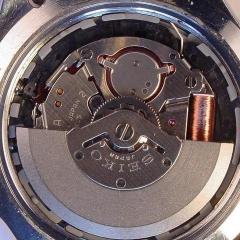AS2066 balance staff jewel cap spring adjustment
-
Recently Browsing
- No registered users viewing this page.
-
Topics
-
Posts
-
By RichardHarris123 · Posted
@oldhippy, hasn't been on since the 14th of April, I messaged him nine days ago, no reply. I hope he's on an around the world trip with endless booze and supermodels. joking apart, I hope he's alright. Does anyone know anything? -
Some of the older American companies did at least claim to manufacture them so reliably that any one of their tailstocks should perfectly center any one of their headstocks. But it would take probably someone like nickelsilver to verify that in a big enough collection.
-
You also have another potential issue with head and tail stocks, in my research it would seem that for the American style lathes the head and tail stocks were bored as a pair. So a matched pair is good a “pair “ made up from two different lathes cause some headaches. The Swiss Geneva style lathes are much lighter but were apparently made to fit any lathe. I have seen mention of being able to shim the tailstock as well to true up. indexing is again not so straightforward for a watchmaker lathe, at least not as I have found so far. Often a lathe will come with basic indexing which is limited to 60 positions. The full index plates do come up at times for eywatering prices. It is very possible to do that electronically. As well as what @SwissSeiko maybe able to point you to have a look here. https://imakewatches.com/projects/CNCIndexDriver.html https://imakewatches.com/projects/MillingAttachment.html Tom
-
On a watch repair discussion group that you know that we love to see naked watches out of the case you show us a box? I think a book on watchmakers lathes should be helpful. The watchmakers' lathe, its use and abuse; a story of the lathe in its various forms, past and present, its construction and proper uses by Goodrich, Ward L https://archive.org/details/watchmakerslathe00good
-
By coreymsnow · Posted
Got it. So a WW lathe will have that graduated drive pulley for different speeds and similar setup for the bed and tailstock, but they won't be fully compatible with one another in terms of parts. Thanks! The picture helps a lot.
-






Recommended Posts